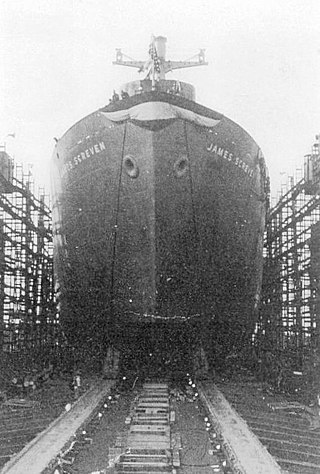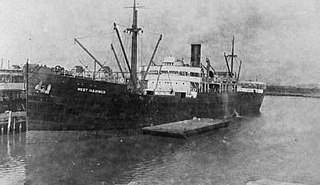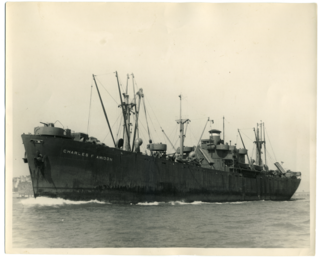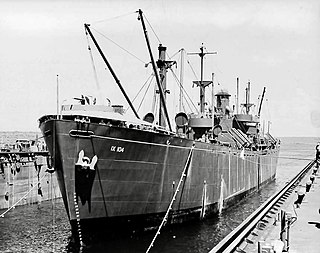
USS Drum (SS-228) is a Gato-class submarine of the United States Navy, the first Navy ship named after the drum, a type of fish. Drum is a museum ship in Mobile, Alabama, at Battleship Memorial Park.

USS Flying Fish (SS/AGSS-229), a Gato-class submarine, was the first submarine and second ship of the United States Navy to be named for the flying fish. Flying Fish is credited with having sunk a total of 58,306 tons of Japanese shipping and received 12 battle stars for World War II service.

USS Bream (SS/SSK/AGSS-243), a Gato-class submarine, was the first ship of the United States Navy to be named for the bream. She served during World War II, and her war operations extended from 1 June 1944 to 15 June 1945. During this period she completed six war patrols operating in the Java Sea, Celebes Sea, Sulu Sea, South China Sea, and Gulf of Siam. She sank two Japanese merchant ships totaling 6,934 gross register tons. In addition, Bream shared with the submarines USS Ray (SS-271) and USS Guitarro (SS-363) the destruction of a 6,806-gross register ton passenger-cargo ship. On 23 October 1944, while patrolling off western Luzon, Bream made a daring surface attack on a Japanese naval force, damaging the heavy cruiser Aoba.

USS Pogy (SS-266), a Gato-class submarine, was the first ship of the United States Navy to be named for the pogy, or menhaden. She was credited with sinking 16 ships totaling 62,633 gross register tons during World War II.

USS Balao (SS/AGSS-285) was the lead ship of the United States Navy's Balao-class submarines during World War II and named for the balao, a small schooling marine fish.

USS Bowers (DE-637/APD-40) was a Buckley-class destroyer escort of the United States Navy, was named in honor of Ensign Robert K. Bowers (1915-1941), who was killed in action aboard the battleship USS California during the Japanese attack on Pearl Harbor on 7 December 1941. The ship was laid down on 28 May 1943 at San Francisco, California, by the Bethlehem Steel Company; launched on 31 October, sponsored by Mrs. Eunice Bowers, the mother of Ensign Bowers; and commissioned on 27 January 1944. The ship served in World War II in the Pacific

USS Refuge (AH-11), was a hospital ship of the United States Navy during World War II. The ship was built in 1921 by the New York Shipbuilding Corp., of Camden, New Jersey, as SS Blue Hen State, but was renamed President Garfield in 1923 and then SS President Madison in 1940 for service with American President Lines. Acquired by the Navy from the War Shipping Administration on 11 April 1942 the ship was commissioned as the transport USS Kenmore until conversion to a hospital ship.

USS Shaula (AK-118) was a Crater-class cargo ship, converted from a Liberty Ship, commissioned by the US Navy for service in World War II. She was first named after James Screven, an American general during the American Revolutionary War. She was renamed and commissioned after Shaula, the second-brightest star system in the constellation of Scorpius. She was responsible for delivering troops, goods and equipment to locations in the war zone.
SS Empire Bunting was a 6,318 GRT cargo ship which was built in 1919. She saw service between the wars under the US flag and was transferred to the UK Ministry of War Transport in the Second World War. She made a number of cross-Atlantic voyages, often sailing in convoys. She ended her career by being sunk as a blockship on the Normandy coast, supporting the allied landings there in 1944.

SS West Maximus was a steel-hulled cargo ship built for the United States Shipping Board's emergency wartime construction program during World War I. Completed too late to see service in the war, West Maximus spent the interwar years in commercial service.
West Saginaw was a 5,758 GRT Design 1013 cargo ship that was built in 1919 by Northwest Steel Company, Portland, Oregon, United States. She was built for the United States Shipping Board, passing to the United States Maritime Commission in 1936. In 1941, she was transferred to the British Ministry of War Transport and renamed Empire Cougar.
Empire Dabchick was a 5,995 GRT Design 1019 cargo ship that was built in 1919 as Kisnop by Atlantic Corporation, Portsmouth, New Hampshire, United States for the United States Shipping Board (USSB). She was transferred to the United States Maritime Commission (USMC) in 1937. In 1940 she was transferred to the Ministry of War Transport (MoWT) and renamed Empire Dabchick. She served until December 1942, when she was torpedoed and sunk by German submarine U-183.
Norlom was a 6,326 GRT Design 1105 cargo ship that was built in 1919 as Editor by Skinner & Eddy Corporation, Seattle, Washington, United States for the United States Shipping Board (USSB), which became the United States Maritime Commission (USMC) in 1937. In 1941, she was transferred to the British Ministry of War Transport (MoWT) and renamed Empire Dunlin. She was transferred to Norway in 1942 and renamed Norlom. She served until 2 December 1943 when she was bombed and sunk at Bari, Italy.
Norvarg was a 4,748 GRT Design 1014 refrigerated cargo ship that was built in 1920 as Rotarian by the Todd Dry Dock and Construction Company, Tacoma, Washington, United States for the United States Shipping Board (USSB). She was sold to the Grace Steamship Co Inc, New York in 1923 and renamed Condor. In 1940, she was sold to the British Ministry of Shipping (MoS), which became the Ministry of War Transport (MoWT) in 1941, and was renamed Empire Elk. In 1942, she was transferred to the Norwegian Government and renamed Norvarg.

Empire Faith was a 7,061 GRT CAM ship that was built in 1941 by Barclay Curle & Co, Glasgow, Renfrewshire, United Kingdom for the Ministry of War Transport (MoWT). Converted to a cargo ship in 1943, she was sold to a British company in 1946 and renamed Jessmore. In 1958, she was sold to a Panamanian company and renamed Antiope. A further sale in 1964 saw her renamed Global Venture. She served until 1971, when she was scrapped.
Athelstane was a 8,129 GRT tanker that was built in 1941 as Empire Flint by Swan, Hunter & Wigham Richardson Ltd, Wallsend, Northumberland, United Kingdom for the Ministry of War Transport (MoWT). She was sold to Athel Line Ltd in 1945 and renamed Athelstane. She was sold to Skibs A/S Vaholm in 1952 and renamed Oakley. Sold to H A Moller A/S in 1959, she served until 1962 when she was scrapped.
Empire Fusilier was cargo ship which was built as Mincio in 1921 by Cantiere Cerusa, Voltri, Italy for Pietro Ravano Fu Marco, Genoa. She was seized as a prize of war in 1940, passing to the Ministry of Shipping and renamed Empire Fusilier, serving until torpedoed and sunk by U-85 in 1942.
SS Verdala was a cargo and passenger steamship that was built in Scotland in 1913. Several times she changed owners and was renamed: as Mongolian Prince in 1917, Istok in 1928 and finally Maycrest in 1940.

SS Charles F. Amidon was an American Liberty ship built in 1943 for service in World War II. Her namesake was Charles F. Amidon, an American Judge from 1896 to 1928.

SS Peter H. Burnett was an American Liberty ship built in 1942 for service in World War II. She was later acquired by the United States Navy and renamed USS P.H. Burnett (IX-104). Her namesake was Peter Hardeman Burnett, an American Governor from 1849 to 1851.












